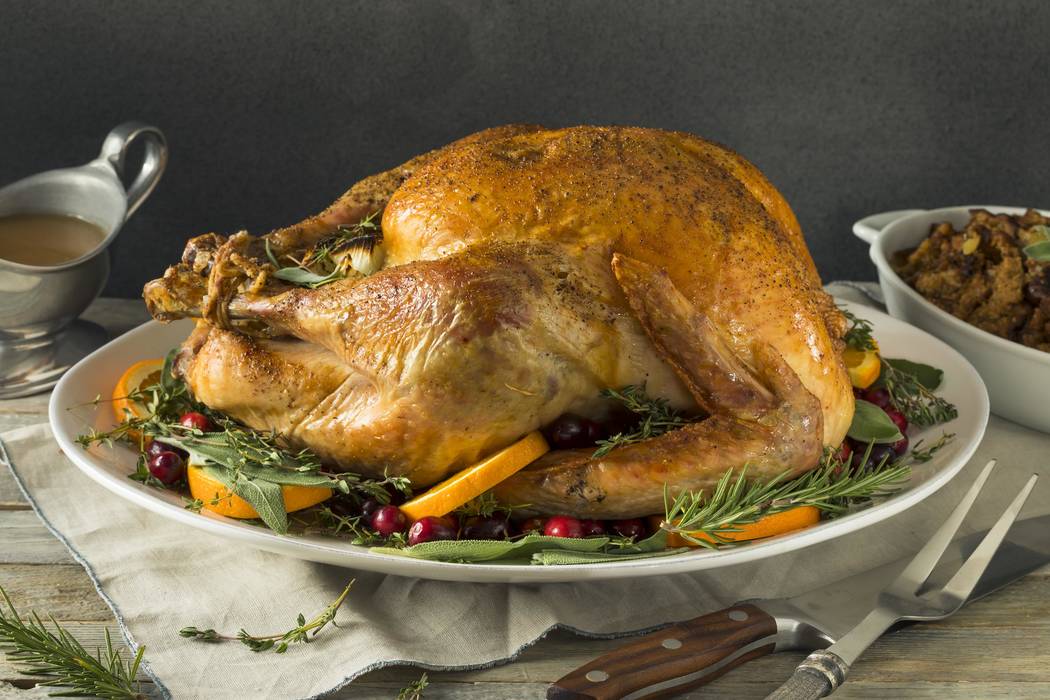Should you buy free-range, pasture-raised or supermarket turkey?
Thanksgiving grocery shopping in this country is a tale of two turkeys. For some, the holiday is a time to clip coupons or take advantage of other special offers that allow them to get a bird at steep discounts to normal prices, sometimes even free. Others turn to boutique poultry farms that can provide information on exactly how your holiday main course spent its life, met its demise and was prepared for its journey to the kitchen.
Artisanal turkeys, if you will, are big business. While supermarket shoppers snatch up birds from the major producers for a dollar or two a pound, mail-order specimens bearing labels such as “organic,” “heritage,” “free-range” or “pasture-raised” can command $10 to $20 per pound. But can you taste the difference?
“I believe so, yes,” said Dustin Lewandowski, an executive chef with the Wolfgang Puck Fine Dining Group.
“I do believe that turkeys that claim to be (artisanal) are better in quality than your average grocery store commodity turkey.”
Paul Kelly, a British turkey farmer now raising his Kelly Bronze turkeys in Virginia for the American market, says there are many reasons his birds taste better than those that are mass-marketed. For one thing, their feathers are plucked by hand after slaughter so they can be hung dry in a climate-controlled room to tenderize.
More than that, however, Kelly said “maturity has the biggest single impact on flavor.”
Your average supermarket turkey, it turns out, is bred to be ready for slaughter when it’s 12 to 16 weeks old. Kelly Bronze turkeys mature to six months. Kelly said consumers can taste the difference in everything from the meat to stock that’s made from the bones.
Not everyone agrees that you’ll notice the difference on your palate.
“To be honest with you, not really,” said Sam Marvin, who runs Tivoli Village’s restaurant and butcher shop Echo & Rig. “(It tastes) a little different for sure, but you’re not paying for better meat.”
Benefits beyond the plate
Despite that, Marvin said he believes in shelling out for a high-end turkey if you can. Echo & Rig is selling two varieties.
“I think you’re paying because you’re supporting small farmers. I think you’re paying because you’re supporting humane treatment of animals. I think you’re paying for certifications like GAP, Global Animal Partnerships. I think that’s what you’re paying-up for.”
If those are your reasons, he said, there are a couple of things you should look for when choosing a turkey.
Heritage refers to a traditional breed of animal developed to be raised on traditional, rather than factory, farms. A heritage turkey will most likely have less breast meat than a factory-farmed bird, will be capable of breeding naturally and thrive when it forages outdoors for its own food. Heritage breed livestock is more expensive to raise, and is usually the province of smaller farms.
For consumers concerned with an animal’s living conditions, Marvin advised looking for birds that have been pasture-raised.
“Pasture-raised means that it has to spend its life on the pasture. It cannot be fed indoors. It’s 100 percent outdoors.”
Don’t confuse that with free-range birds.
“Free-range means 51 percent of the time, the chicken or turkey has to have the opportunity to go on the free range. There’s still 40,000 chickens in a coop. So it doesn’t (really) mean anything.”
Marvin, who sells free-range turkeys from California’s Diestel Family Ranch, recommended buying one only if you know the specific conditions on the farm on which it was raised.
The importance of other labels varies. Organic refers to the feed the turkeys consume. But since adding hormones to poultry is illegal in the U.S., a promise of a hormone-free bird is basically meaningless.
“It’s all a personal choice,” Lewandowski said of turkey options. “It depends on what type of diet you adhere to and what type of standards you apply to your day-to-day shopping and menu planning.”
Whatever you choose, Marvin said the splurge is worth it.
“I say yes, it is worth spending the extra money, for sure. It’s not that often you’re buying a whole turkey. So once a year it’s definitely, definitely worth paying-up for.”
In the kitchen
If you spring for a boutique bird, experts advise you to be prepared for a different cooking experience.
If you choose a heritage breed, said Echo and Rig’s Sam Marvin, ‘You’ll definitely get less breast, and you will get a lot less white meat.
“You won’t see that real white-to-dark differential. The breast meat won’t be that big beautiful white color. It’ll have a little tint to it, because of blood flow.”
Mature birds also cook more quickly, said Kelly Bronze’s Paul Kelly, regardless of breed.
“Our birds cook at twice the speed of the standard supermarket turkey, (because) they have lots of intramuscular fat that conducts the heat through the meat a lot quicker than a bird that’s been killed very young and is very lean.”
All of that means that you’ll have to watch your turkey a bit more carefully, said Dustin Lewandowski of the Wolfgang Puck Fine Dining Group.
“Commercially bred turkeys … have been designed with the turkey button set-it-and-forget-it mentality, or to just set the timer based on the weight.”
That approach just won’t fly with better birds.
“More experienced home cooks need to learn to (cook turkey) with a little more care,” he said.
The internal temperature of a fully-cooked turkey should be 165 degrees, according to the USDA.
“You want to start being cautious as it approaches 140, because the last 10 or 20 degrees come pretty quickly,” Lewandowski said. “If you’re going to rest your turkey, you can start pulling it out at 145 or 150 preparing for a later blast as you get closer to carving or closer to dinner that carries it up the rest of the way.”
Contact Al Mancini at amancini @reviewjournal.com. Follow @AlManciniVegas on Twitter.























